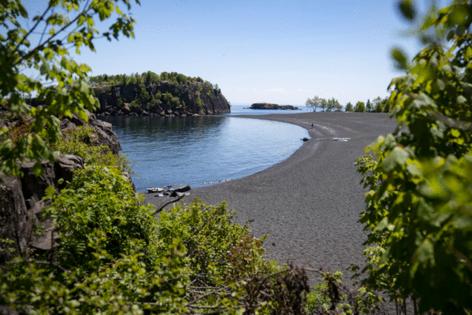U of M study: Wakeboats stir up lakebed sediments when operated in shallow water
Published in News & Features
Wakeboats in surfing mode should operate in at least 20 feet of water to avoid stirring up sediment in a way that’s harmful to water quality, according to a study by the University of Minnesota.
The study, made public Tuesday, found that wakeboats cruising at surf speed can trigger a complex set of waves that stir sediment. In turn, the motor’s propeller mixes the sediment into the water column, resuspending it and releasing phosphorous, according to the study.
Andy Riesgraf, lead author of the U of M study, said the research found wake boats in surfing mode “significantly disrupting the lake bottom’' even at depths of 14 feet.
“At 20 feet or greater, the velocity is no longer a concern,’' he said.
The findings were immediately criticized by the marine industry, which argues that wakesurfing in at least 10 feet of water is harmless to the shoreline and water quality.
But cabin owners and lake associations applauded the study.
“It’s a big deal,’' said Jeff Forester, executive director of Minnesota Lakes and Rivers Advocates. ”The study says (no wakesurfing) in less that 20 feet of water or it’s impacting water quality.’'
Forester said the damage to water quality is especially egregious in lakes where hundreds of thousands of dollars have already been spent on treatments to mitigate algae problems caused by phosphorous.
“This is the most complete study that we’ve seen to date,’' Forester said. “It will have an impact.’'
In a previous phase of the U’s study of wakesurfing, researchers found that waves from wakeboats take up to 500 feet to diminish to levels created by other boats. Forester said the science now calls for wakesurfing to take place in at least 20 feet of water and at least 500 feet from shore.
He said there’s already at least 60 lake associations drawing maps to post at public boat launches to outline where wakeboats can operate without causing ecological harm, including the uprooting of aquatic plants.
The marine industry’s standard setback for wakesurfing has been 200 feet from shore.
“Science has consistently told us wave impacts from wake surfing are minimal on shorelines when done at least 200 feet from shore and in water 10 feet deep,’' Lee Gatts, vice president of government affairs at Water Sports Industry Association, said in response to the study.
In a statement Tuesday, Gatts said the U’s study relies on outdated data and fails to account for modern technology that reduces disruption from wakeboats on Minnesota’s shorelines and lakebeds.
Gatts said policymakers should review the full body of science, which he said supports environmental stewardship and recreational access, before making policy decisions.
The university’s study was not peer-reviewed for publication in a research journal, but it did undergo an independent technical review process, Riesgraf said. The first phase of the research was published in February 2022. It centered on wave height, wave power and wave energy generated by wakeboats. It has been downloaded more than 17,000 times, the university has said.
The latest phase of the research project focused on “hydrodynamic phenomena that occur beneath the water surface as a powerboat moves about, and their potential impacts to the aquatic environment.’'
Besides the 20-foot minimum depth recommendation for wakesurfing, researchers are now recommending that all motorized recreational watercraft travel in depths of at least 10 feet of water even while “leisure cruising’' around a lake at 5 mph or 6 mph. Greater velocities can disturb lakebed sediments, researchers found.
_____
©2025 The Minnesota Star Tribune. Visit startribune.com. Distributed by Tribune Content Agency, LLC







Comments